Best Winter Hike In Seoul: The Seoul Fortress Wall on Bugaksan Mountain
Last Updated on April 5, 2025
Huge flakes of snow were falling from the sky and to most it would have seemed an inopportune time to head out to hike along the Seoul Fortress Wall on Bugaksan Mountain (북악산), but plans had been made and the hiking club members, no strangers to adverse hiking conditions, suited up to head out into the cold.
If you’re looking for one of the best hikes in Seoul no matter the weather, this is it. Snow keeps many people away from the mountains, but for those that do make it out, it can be an extra special time to hike in the quiet after the snow and the calm surroundings with few people on the trails.
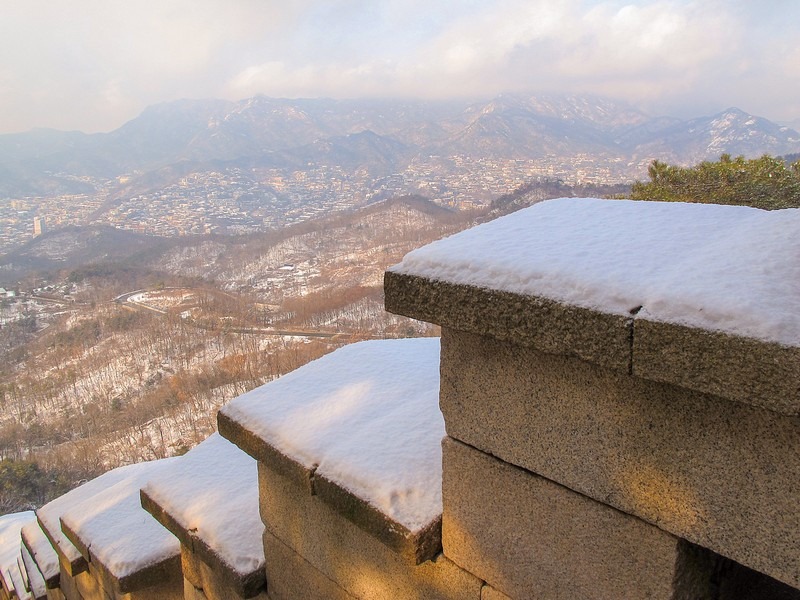
Get ready to hike in the winter at Bugaksan Mountain in Seoul:
- How To Get There
- What You Need To Know
- What To Know About The Hike
- What To See Along the Seoul Fortress Wall Bugaksan Section
- Tips For Your Hike
(This post contains affiliate links, which means I receive a certain percentage of a sale if you purchase after clicking at no cost to you. Thank you for your support.)
How To Get There
You can start this hike from either the western or eastern end. My hiking club always starts on the eastern side, heading west over the mountain, so here’s how to begin that way:
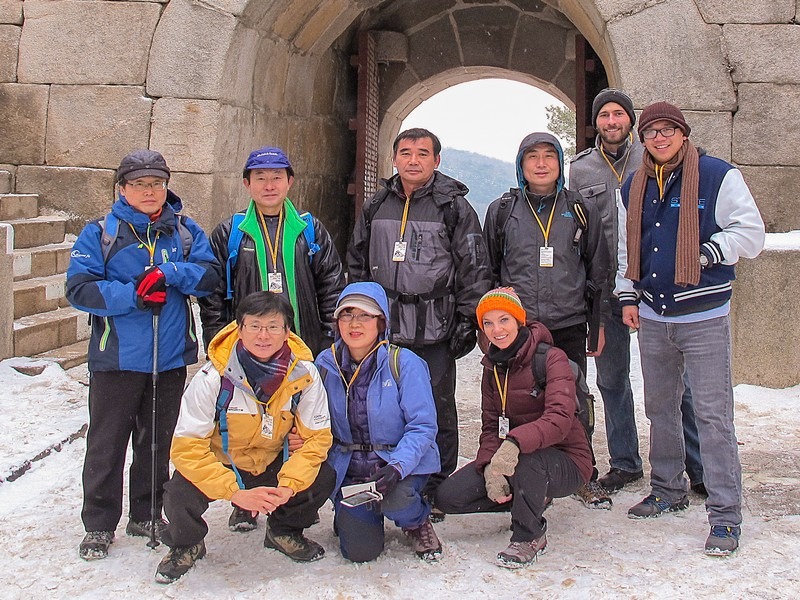
To Start:
Take the subway to Anguk Station (Line 3), Exit 2. Just outside the exit, you’ll find a bus stop. Hop on Bus #2 and get off at Seongdae Rear Gate / Waryong Park (성대후문 / 와룡공원)—it’s the second-to-last stop. If you miss it, you can walk back from the final stop. From Seongdae Rear Gate, head uphill toward Waryong Park. Don’t go through the tunnel—walk past the park entrance and you’ll spot the Seoul Fortress Wall ahead. Follow the wall uphill. The trail entrance is clearly marked.
To End:
Finish your hike at Changuimun Gate (창의문). From there, follow the short road out to the main street. You’ll see a bus stop across the road—any of the buses here will take you to Gyeongbokgung Station (Line 3), where you can grab a bite to eat or catch the subway home.
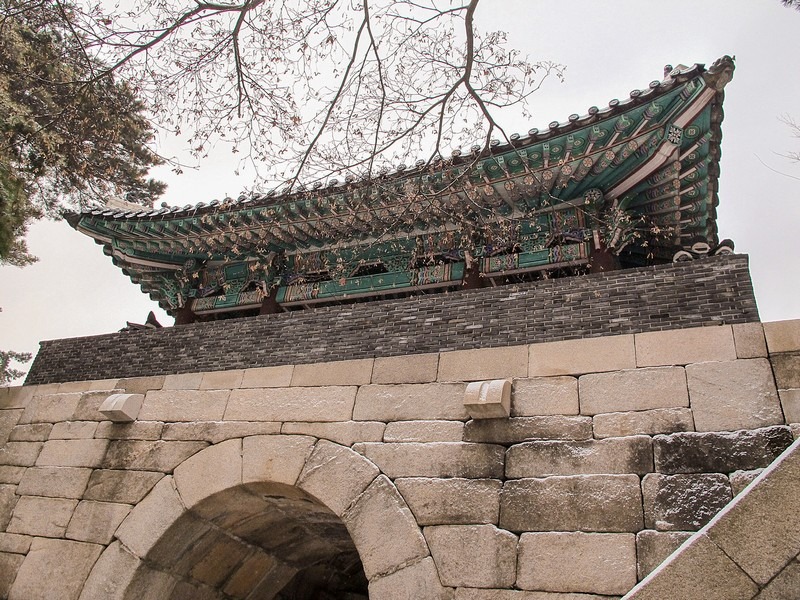
What To Know About The Hike
The Seoul Fortress Wall is more steps than anything, so it’s not so much hiking as it is partaking in discussions of history while meandering over cobbled stones. This part of the wall follows the mountain that sits just behind Gyeongbukgung Palace and the Blue House, where the president resides.

Bugaksan is the guardian mountain of the palace, and now the president, and reaches 342 meters high. There used to be military on duty along this ridge to keep a watchful eye on all hikers in the area stopped anyone from taking photos in a certain direction, that being the Blue House. But, since the Korean president moved from this residence, the military units have left the mountain.

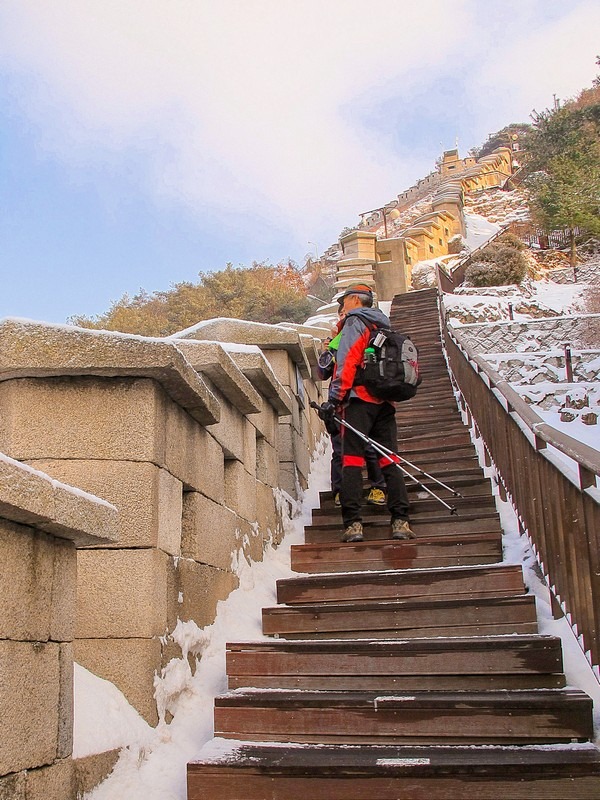
Another duty of the men on guard also seems to be snow blowing the trails, interestingly, so don’t be worried about snow and ice making the trail completely inaccessible. We followed behind one snow blowing gentlemen for about 10 minutes as he cleared the way. We were happy to wait.

This part of the path had been closed to visitors for 38 years after an assassination attempt on the then president by North Koreans but was opened once again in 2006.

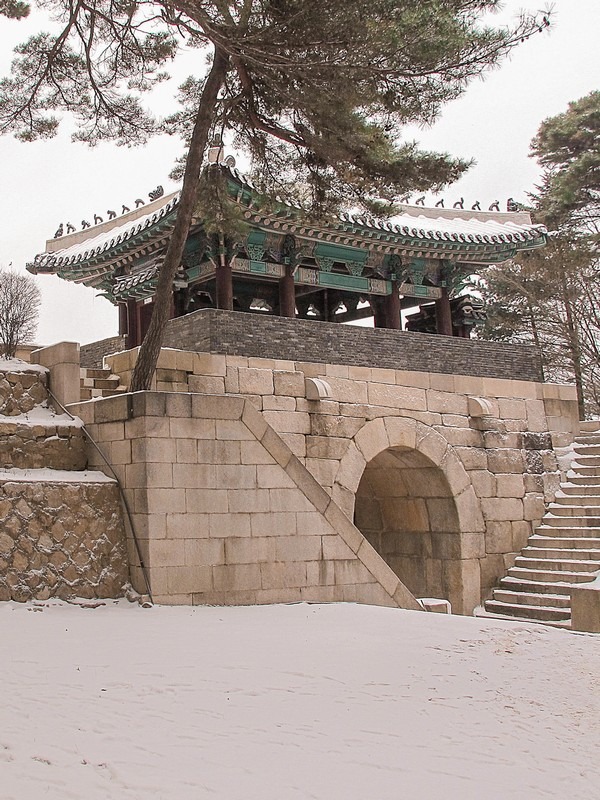
What To See Along the Seoul Fortress Wall Bugaksan Section
Sukjeongmun Gate is the first major landmark you’ll pass. It is the northernmost of the four main gates of the fortress and was originally built in 1396 a bit more to the west than where it now stands. Learn more about the 8 gates of the Seoul Fortress Wall and the path here. In 1504 this gate was rebuilt where it now sits.
Because it’s behind the royal palace, the gate was mostly ceremonial. According to Yin and Yang principles, the north gate represents water, and during droughts in the Joseon Dynasty, the south gate would be closed while the north gate remained open.
According to the scholar Hong Seok-mo, “If women were to visit Sukjeongmun three times before the first full moon, then all the misfortune of the year could be avoided.” However, scholar Lee Gyu-gyeong states that, “If Sukjeongmun were left open, the women within the fortress became lustful and the gate was ordered to be closed all the time,” because of this. The gate is currently left open at all times…
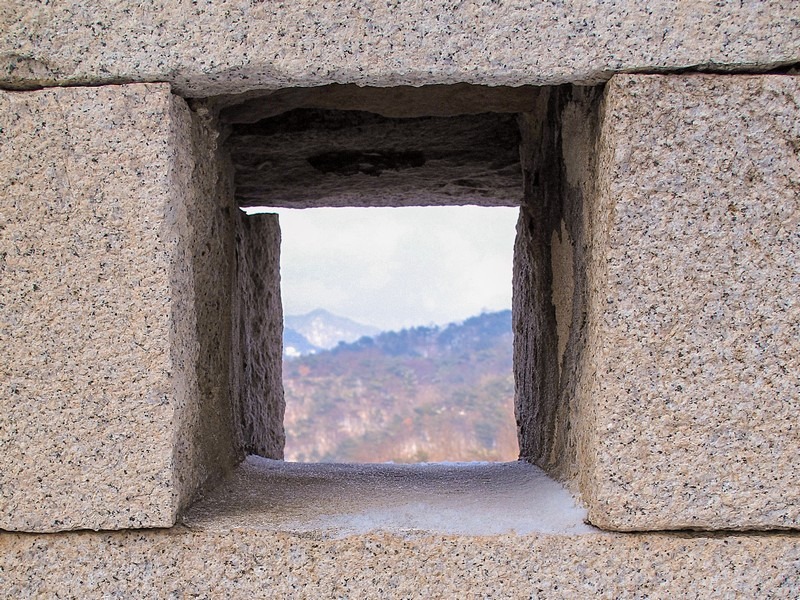
While walking along the wall, it easy to notice major differences in the size and color of the stones as different kinds of stones were used during different periods of construction. The original parts of the wall built in 1396 use the smallest stones to be found along the wall and they are not uniform in shape.
Later parts of the wall constructed in 1422 have a more uniform rectangular shape with some small stones placed in the cracks. Still later, the parts of the wall erected in 1704 have stones trimmed down to 60cmX60cm and required four sturdy men to lift each.
This is a perfectly reasonable trail to hike in the winter as well as any other season, so don’t neglect it just because of the snow and ice.
Tips For Your Hike
- Pack The Essentials: Take at least a bottle of water and a snack for the top. For this hike, again, you’ll need a passport or your ARC as well. I have a small backpack that I take that also has room for tissues, wet wipes, and my wallet.
- Dress Appropriately: For a winter hike, you need layers. I start with Uniqlo Heattech and then a fleece top, hiking pants, wool hiking socks and hiking shoes.
- Keep An Eye on Air Pollution: Air pollution is a big issue in Korea and when it’s bad, it is really bad. You’ll need a mask at the very least, but if it’s really bad, definitely postpone your hike.
- Start Early: Koreans don’t really tend to be early morning people in general. The earlier you start, the easier to avoid any crowds.
Did you like this post? Pin It!
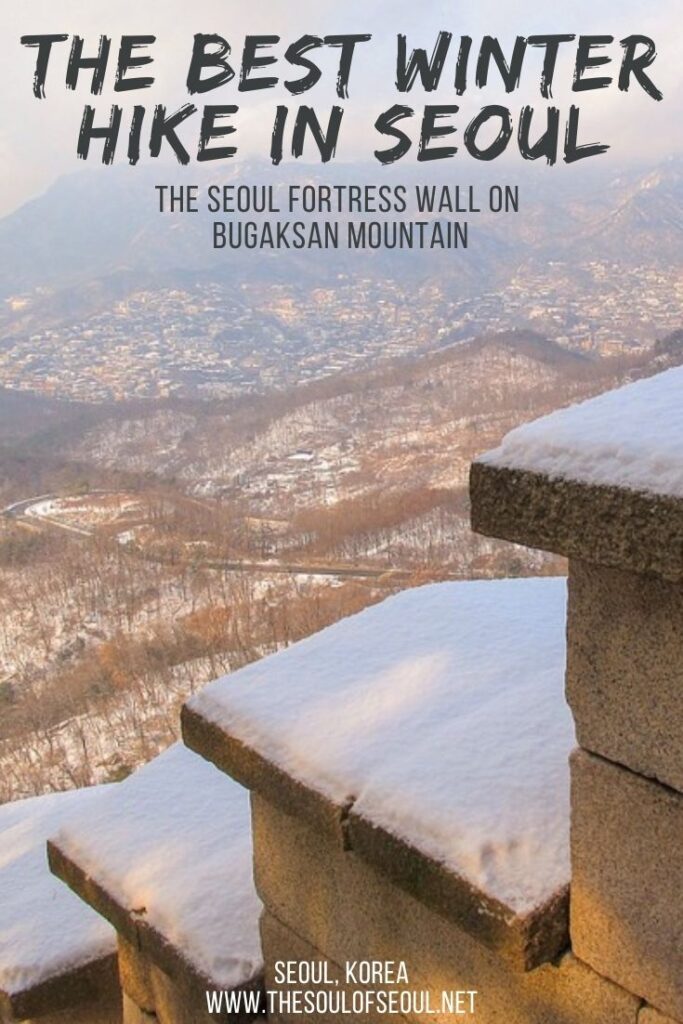
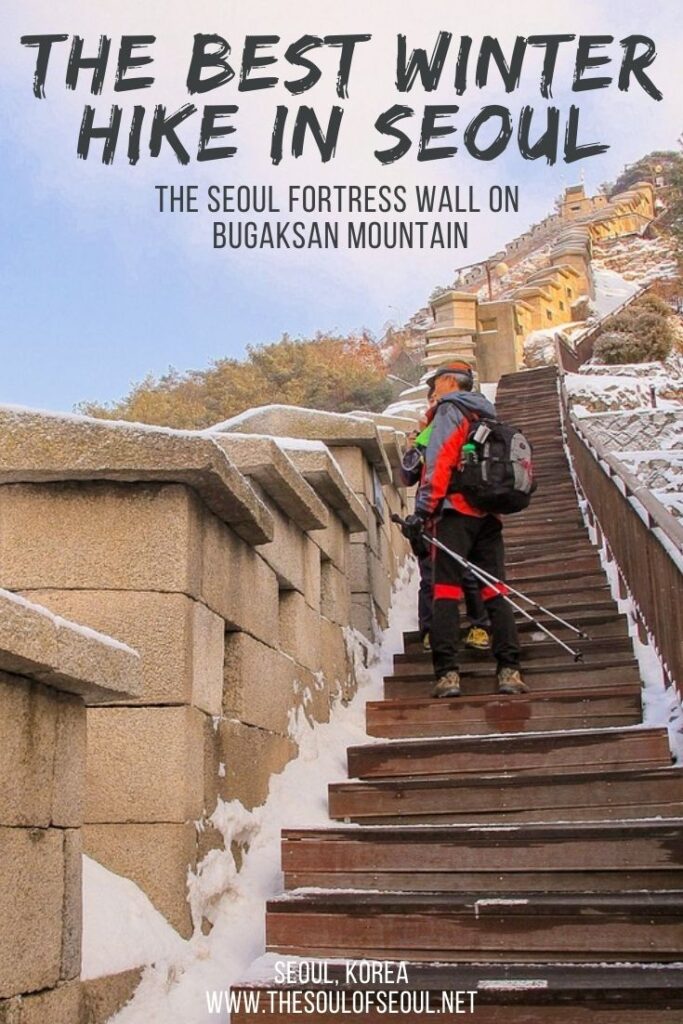
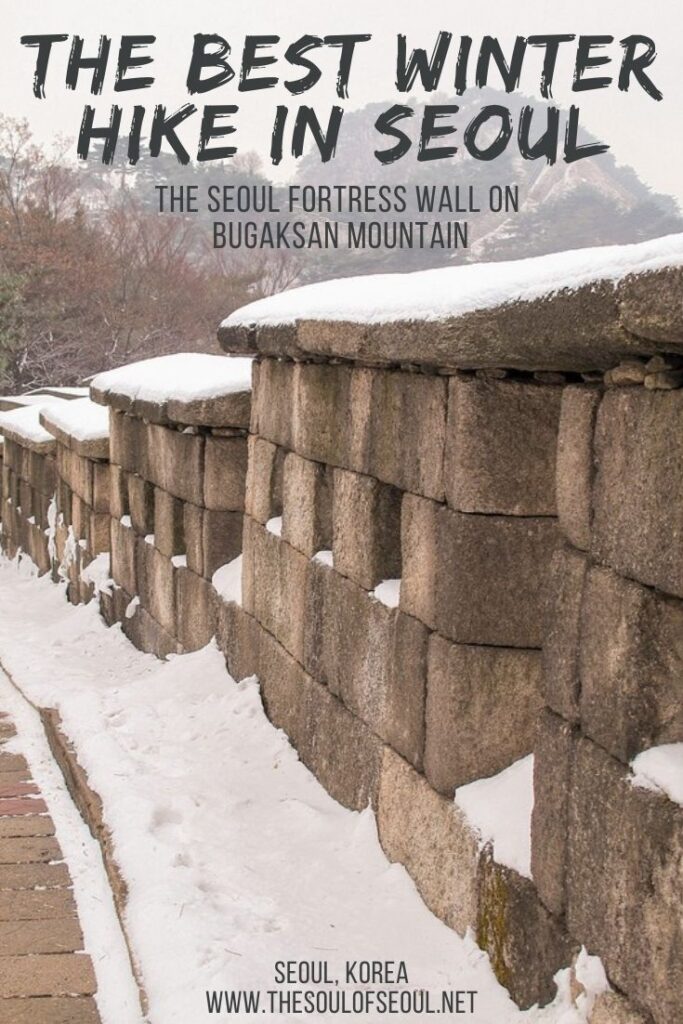
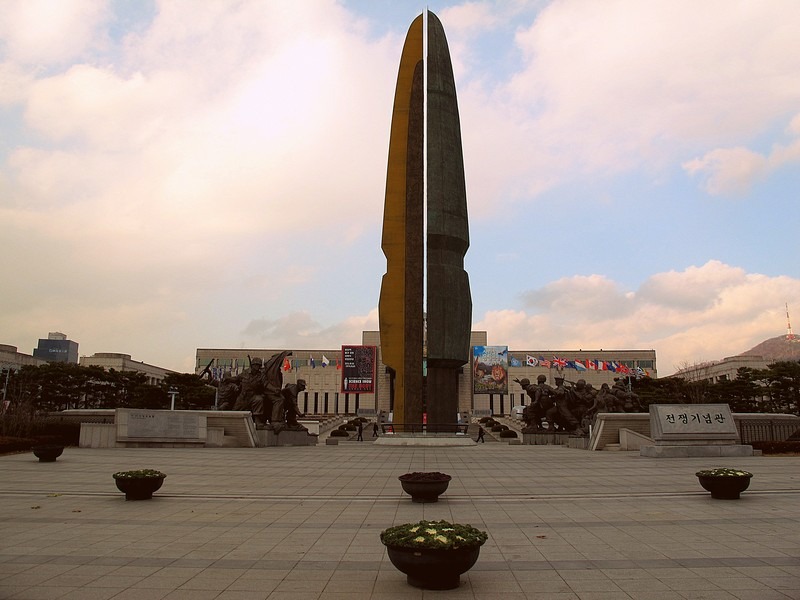
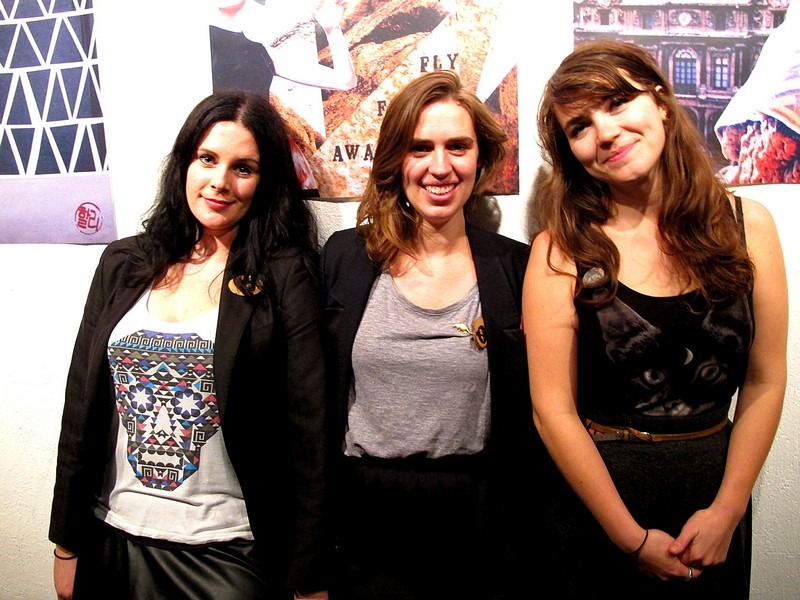
2 Comments
Hedgers Abroad
Love all the hiking posts recently! Everything looks so lovely with the snow.
Hallie
Yes totally taking advantage of the views while it’s not toooo cold. It’s cold but not as cold as it’ll be in February and by then I’ll be hibernating. ^^